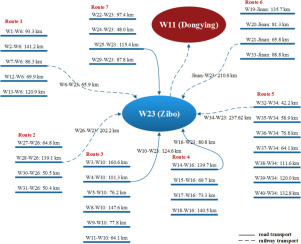当前位置:
X-MOL 学术
›
Sci. Total Environ.
›
论文详情
Our official English website, www.x-mol.net, welcomes your
feedback! (Note: you will need to create a separate account there.)
Environmental evaluation of a distributed-centralized biomass pyrolysis system: A case study in Shandong, China.
Science of the Total Environment ( IF 8.2 ) Pub Date : 2020-01-24 , DOI: 10.1016/j.scitotenv.2020.136915 Xiaoxiao Yang 1 , Duoduo Han 1 , Yuying Zhao 1 , Rui Li 1 , Yulong Wu 2
Science of the Total Environment ( IF 8.2 ) Pub Date : 2020-01-24 , DOI: 10.1016/j.scitotenv.2020.136915 Xiaoxiao Yang 1 , Duoduo Han 1 , Yuying Zhao 1 , Rui Li 1 , Yulong Wu 2
Affiliation

|
The limited quality of liquid product from the fast pyrolysis of biomass resources is a great obstacle to its large-scale application. Herein, a distributed-centralized agricultural straw pyrolysis (DCP) system with products of high market acceptance was implemented based on the design of a pilot plant and previous research. The system consisted of distributed pyrolysis workshops and a centralized upgrading factory that involved crude oil separation, hydrogen production, and hydrorefining. The crude fuel was separated by distillation before hydrotreatment, which avoids external hydrogen and energy consumption compared with direct hydrotreatment, and the hydrotreatment unit is independent of external hydrogen supply. The environmental impacts of a specific case designed for the northern region of Shandong province in China were evaluated using a life cycle assessment (LCA) method. LCA results indicated that abiotic depletion potential, acidification potential, global warming potential, ozone layer depletion potential, and human toxicity potential were primarily from fuel combustion, electricity, and N fertilizer. Eutrophication potential was primarily from the biomass production stage. Results demonstrated that the GWP of the system was -0.62 kg CO2,eq per kg crop straw. Comparison with the conventional straw incorporation method indicated the economic and social benefits of the DCP system, which is thus expected to be a promising option for crop residue disposal.
更新日期:2020-01-24











































 京公网安备 11010802027423号
京公网安备 11010802027423号